|
 Ganoderma applanatum Ganoderma applanatum
SynonymsElfvingia mastopora
Fomes igniarius
Ganoderma mastoporum
Polyporus applanatus
Elfvingia applanata
Fomes applanatus
Fomes australis var. oroflavus
Fomes mastoporus
Fomes mastoporus f. rugosus
Fomes oroflavus
Fomes subtornatus
Polyporus igniarius
Ganoderma subtornatum
Ganoderma sp(p).
BiostatusPresent in region - Indigenous. Endemic
Images (click to enlarge)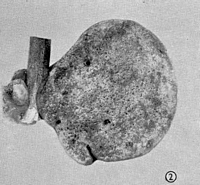
Caption: Fig. 2. Fomes mastaporus, x 1. Small specimen showing rugulose surface and small pores of hymenium to form rugosus. Lateral extension of the pileus is not uncommon in the species. | 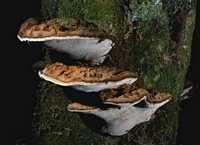
Owner: P.K. Buchanan | 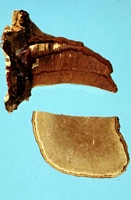
Owner: P.K. Buchanan | 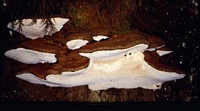
Owner: P.K. Buchanan | 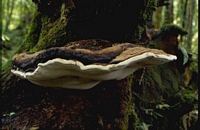
Caption: Ganoderma cf. applanatum
Owner: P.K. Buchanan |
Article: Dingley, J.M. (1969). Records of plant diseases in New Zealand. New Zealand Department of Scientific and Industrial Research, Bulletin 192: 298 p. Wellington:.
Article: Cooke, M.C. (1879). New Zealand fungi. Grevillea 8(46): 54-68.
Article: Cunningham, G.H. (1948). New Zealand Polyporaceae. 8. The genus Fomes. New Zealand Department of Scientific and Industrial Research, Plant Diseases Division, Bulletin 79: 24 p.
Description: With the characters of the species, save that the hymenium is irregularly pitted with shallow
depressions 1-2 mm. deep, often labrynthiform towards the centre; pores are present in both
depressions and ridges.
Notes: Probably the most abundant species of Fomes present in the Dominion. In a former paper
(1927, p. 218), following identifications made by the late C.G.Lloyd, I referred the species
and form to F. subtornatus (Murr.) Lloyd. Following examination of the type of this last, and
of specimens from New Zealand, C.J.Humphrey in correspondence advised that our plant did
not resemble F. subtornatus, but agreed with Philippine specimens of F. mastoporus. The
hymenial configuration is striking. Pores are minute owing to partial blockage of orifices, and
are often set in rows with part of the wall suppressed; in the form the condition is carried
further. Pores may appear in small depressions or the intervening ridges, both being so
arranged that the surface is labrynthiform, save the periphery which may be plane. As even in
the smallest and youngest specimens the condition is present, it is evidently a constant
feature. In size, plants range from small buttons 2 mm. wide, to applanate or occasionally
ungulate forms 10-20 cm. in length. One specimen reached the large size of 50 x 30 cm., but
this is unusual. Spathulate or digitate forms, with lateral stem-like extensions of the pileus,
are not uncommon.
|